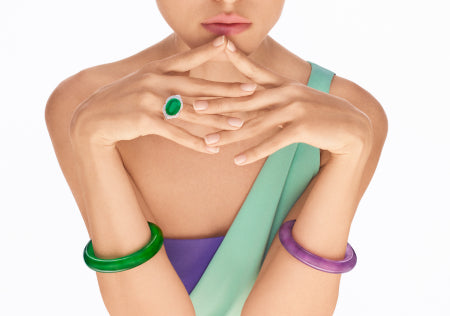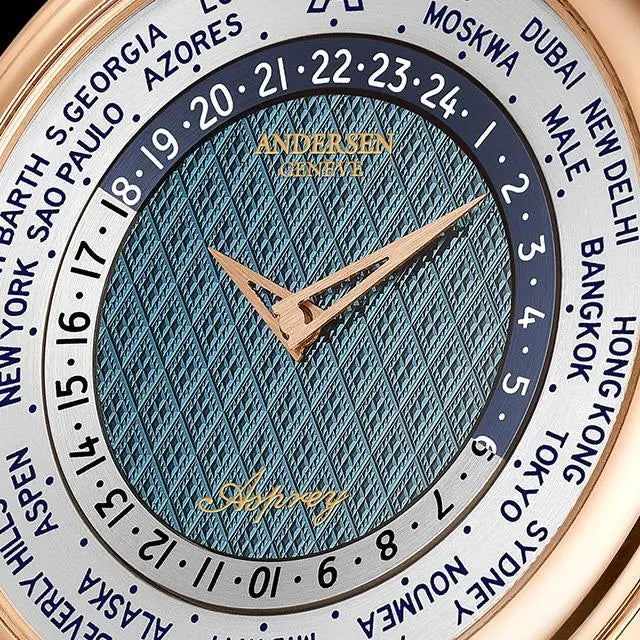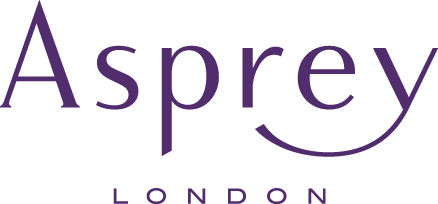EXOTIC LEATHERS
Crocodilian is a collective noun that covers both alligators and crocodiles. At Asprey we use Mississippi Alligators, Nile & Porossus Crocodile leathers.
Unquestionably the most precious and luxurious of leathers, these are also amongst the most beautiful. Valued for their rarity, technological developments over recent years have led to the creation of a variety of different finishes. Asprey still uses classic polished finish and matt finish, but we use many soft and shiny finishes as well as eye catching fusion colours, metallic and two-tone finishes.
These exotic skins are difficult to work, and Asprey’s craftsmen are the best and most experienced at working this unique leather. Asprey also works extensively with LIZARD leather (iguana) & PYTHON (molorus & reticulatus) leather.
SADDLE LEATHER
Saddle leather is a cow hide that has been tanned in a specific process in which both sides of the leather is infused with oils and finished with wax. This is a labour-intensive process and the special properties of our saddle leather reside in the choice of tanning agents used. In the purest tradition of vegetable tanneries, we mostly use mimosa, québracho and chestnut barks. Sustainable development is at the heart of these choices. A blend of traditional equipment and modern tooling means that our saddle hide is able to respect European environmental standards. Rightly considered a British tradition, this beautiful, hard-wearing leather has been produced by tanners and manufacturers for equestrian use for centuries. The beauty of this type of leather transfers exceptionally well to leather-goods. The vegetable tanning and natural dying processes make for the most distinctive appearance enhanced by stitching, edging and veining.
These are examples of the methods of working and constructing the leather employed by our craftspeople, that allows us to use this beautiful traditional leather to create such diversely substantial items such as briefcases & desk top sets as well as smooth supple wallets & passport covers.
SOFT GRAIN LEATHER & NUBUCK SOFT GRAIN LEATHER
The soft grain leather we use is full hide, selected from the best breeding areas in France and Europe. Soft grain leather is defined by being the hide of cow around a year to a year and a half. In order to emphasize the natural grain of the bull, the leather is tanned in a thickness of at least 2 mm. It creates a very traditional, comfortable and strong leather.
Mineral tanned and vegetable re-tanned, soft grain leather is resistant and smooth. Drum-dyed, the colours are rich, transparent and deep, making use of dyes selected for their richness and light fastness.
Steeped in animal and vegetable tanning liquors, the leather becomes soft and smooth. The finishing reveals the natural full grain. We use this wonderful leather with 2 distinctive finishes – natural grain and nubuck. Nubuck differs only in that the top surface of the leather has been removed to reveal an extraordinary velvety napped skin.
CALF LEATHER
Full-grain calf leather is one of the most valuable, beautiful, pleasingly tactile and durable materials.
Only the uppermost layer of the hide has the naturally smooth surface grain which we associate with fine calf leather, and the calf leather used by Asprey can only be achieved using the finest flawless hides with no scratches, marks or other imperfections.
Full-grain leather, like most of the finer things in life, improves with age, developing an increasingly attractive patina with repeated use and over time, transforming everyday accessories into things of lasting quality and real beauty.
INDEN CROSS HATCH LEATHER
The Cross-Hatch leather has been skilfully prepared for Asprey by an artisan tanner & printer in Japan. The Inden technique has been honed for more Than 400 years, since the establishment of the maker in 1582. The leather was originally used to make certain parts of Japanese samurai armour because of its unique softness & lightness paired with its flexibility & strength.
The leather has been processed and decorated using specialist techniques, originating and still being produced today only in Koshu, Japan. The leather Is tanned, dyed and silkscreened on site in individual panels. The smooth glossy surface texture is achieved by pressing a unique lacquer pattern by hand. This lacquer is derived from tree resin, made to a confidential formula.
The print design takes its inspiration from the Cross-Hatch pattern on the Asprey gift packaging.
SHARK SKIN LEATHER
Shark skin is an amazingly durable skin with a unique grain texture distinguished by a pattern of natural ripples. The softness & suppleness are truly exceptional & the resilience of shark skin ensures that it will last for many years, becoming more interesting and beautiful with use. It is a highly sought-after precious skin, a by-product from fishing villages and international cuisine. from non-endangered & non-threatened species, the shark skin used for leathergoods does not require Cites documentation.
HORSEHAIR FABRIC
Horsehair cloth is a wonderful traditional fabric, woven in England since the 18th century. It was originally woven from the tails of working Shire horses, which were cropped for safety. The horsehair was sourced from local working horses and cleansed in the village pond. The eventual replacement of horses by motorised vehicles has necessarily limited the amount of horsehair produced. Mounted onto a cotton warp, the fabric was initially woven by hand, although the process was mechanised in the 19th century, and now the horsehair is woven using the original looms and techniques of 125 years ago.
KIDSUEDE
Always aspiring to the ultimate luxurious material for the interior of our handbags and other products, kid suede is the only possible option.
Kid skin is a type of soft, fine leather that was traditionally used for gloves. The kid suede is created by removing the fine surface grain to reveal the softest part of the leather. The smaller the skins, the softer and finer the end result. The fibres of the kid suede will be of uniform length and densely packed together. This gives a resilience to the nap so that it does not show finger-marks. Mineral tanning produces a stunning array of breath-taking colours, and a final finish ensures the colour fastness.


